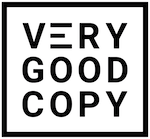That’s why effective copy is clear and concise first, and clever second.
Clear, concise copy focuses on the product, its benefits and unique advantages. Clever copy, on the other hand, calls attention to the writer’s creativity.
The latter will get attention (more on this in a moment) but it won't close the prospect, as she doesn’t care about your creativity. The prospect is only interested in buying change.
As a copywriter, the essence of your work is to convey the life-changing benefit(s) of the product so well that your prospect has no conclusion to draw except “Please, take my money!”
How do you do that?
Research.
JOIN THOUSANDS OF SUBSCRIBERS
Research is central to effective copywriting.
And the key to research is 1) testing and 2) asking efficient questions. (This article focuses the latter.)
“You should begin every assignment like an investigative reporter,” writes Gary Bencivenga, a direct-response legend. “[You must] ask your client and his or her best salespeople a torrent of questions, starting with these …”
1. “Why is this product made the way it is?”
Because your copy must have an angle, a unique selling approach that garners attention. This is your chance to shine creatively.
When Joe Sugarman, another master copywriter, learned that a digital watch he was selling was manufactured using a laser, it became his ad's angle. He wrote it into the headline:
"Laser Beam Digital Watch"
“The story told of how the watch was made possible thanks to a laser beam and how its new technology benefited the consumer,” explained Sugarman. “That single concept resulted in millions of dollars in profitable sales for the digital watch.”
2. “What consumer problems, desires, and needs is it designed for?”
Because your copy must work to assuage the prospect’s pain, quelling her fears.
Or it must enable her pleasure, aligning with her vision for a better, easier tomorrow.
3. “What’s special about it — why does it fulfill a consumer’s needs better than the competition?”
Because your copy must differentiate the product from anything else on the market.
A unique product is irresistible.
4. “Who says so besides you?”
Because your copy must be credible — and testimonials are a potent source of validity and trust.
5. “What are all the product’s best features and how does each translate into a consumer benefit?”
Because your copy must do the following in either order:
It must tell the prospect what the product does (i.e., the features)
It must explain how the product will change her life (i.e., the benefits)
Every benefit, of course, is a potential story — and every story is an opportunity to connect with the prospect via an emotion.
Features tell and benefits sell.
6. “If you had unlimited funds, how would you improve this product?”
Because your copy must call out and defend the product’s weaknesses.
Transparency breeds trust.
7. “Who are its heavy users — the 20 percent who generate 80 percent of sales?”
Because your copy must speak to an ultra-specific audience.
As the saying goes, Never write for anyone, always write for someone.
The "heavy users" can also teach you a lot about the product's benefits, if you ask.
Ask these questions.
Then think deeply about the answers you get.
Then forget about the product altogether.
Then write your first draft.
LEARN TO PERSUADE
✅ Join thousands of email subscribers
✅ Less than 0.4% of readers unsubscribe
✅ Never miss a Micro-Article or -Interview
✅ Get instant email access to VGC's founder
✅ Be first in line to get new, free Micro-Courses
Hey there, thanks for reading. :)If you want more “micro” content, feel free to explore 100s of articles, interviews, courses, and series — all free. Enjoy!Eddie Shleyner
VeryGoodCopy, founderP.S. If you like VGC, you’ll love VGC Plus. Instantly unlock every post right here.


![VeryGoodCopy [Logo] DARK.png](https://images.squarespace-cdn.com/content/v1/5615edeae4b0b9df5c3d6e90/1532924675363-VIZM0JGG82Q7FOR24HUP/VeryGoodCopy+%5BLogo%5D+DARK.png)































